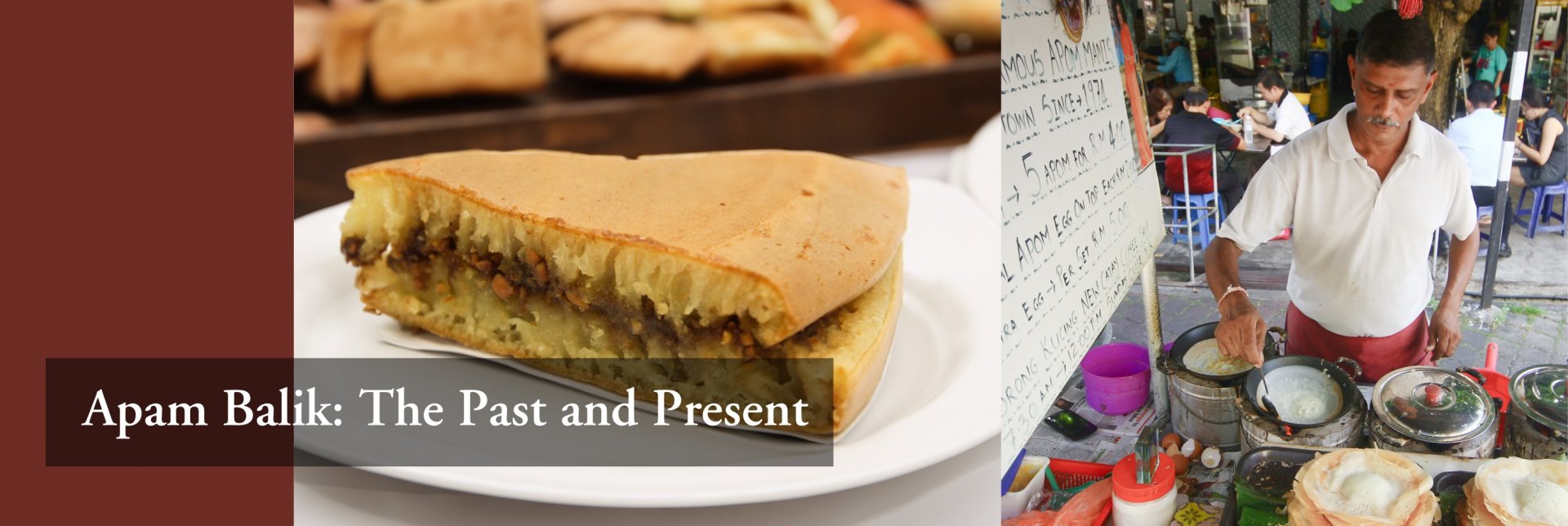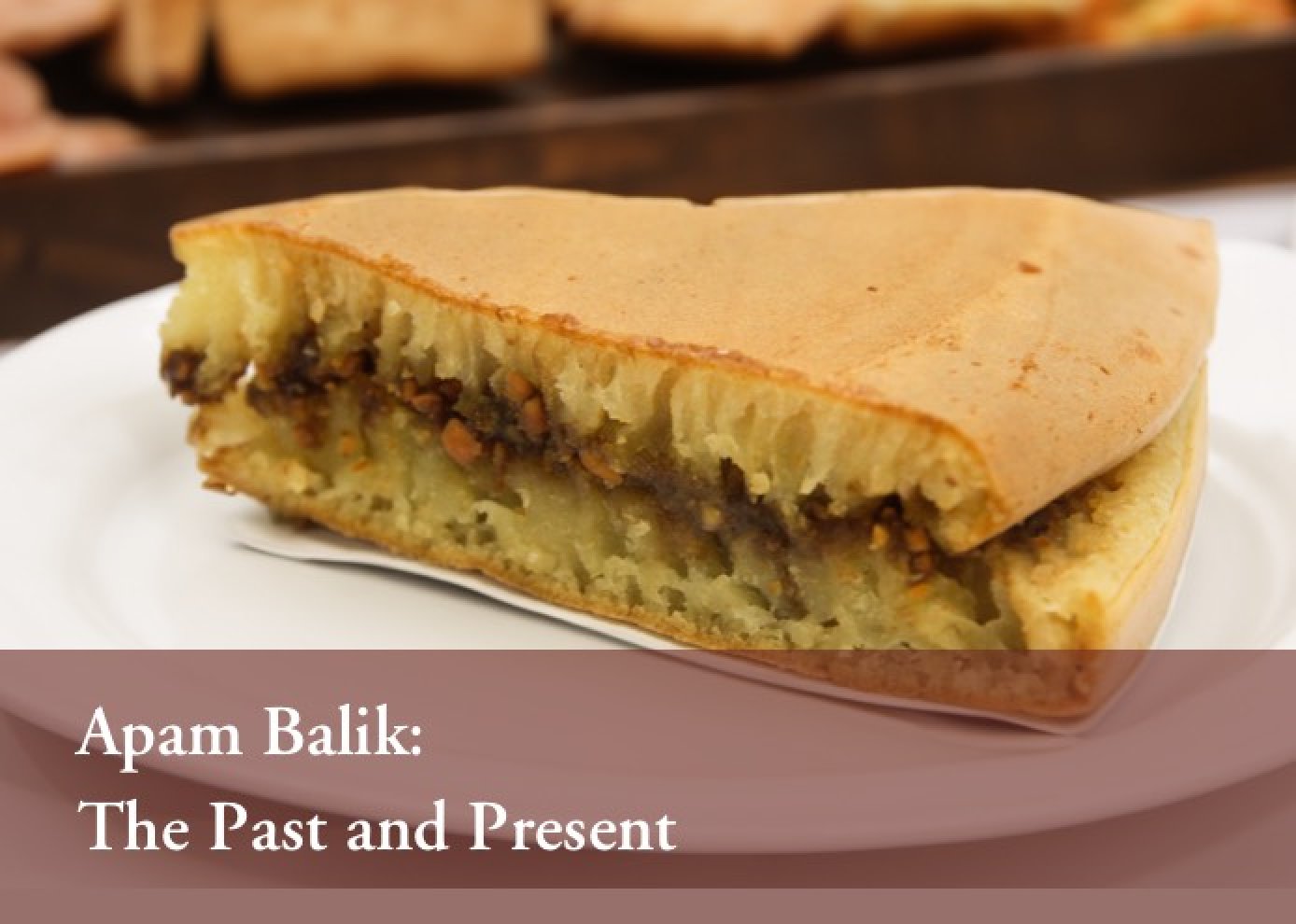Apam Balik: The Past and Present
The Apong and Apam Balik (曼煎糕, Apam Balik is the pronunciation in Malayalam) are all the much-loved snacks in Southeast Asia. For the source of Apong is still a matter of debate, South India and Indonesia are all be seen as the birthplace of it, but in the culture of Southern Asian Chinese, Apam Balik is related with Zuo Zongtang (左宗棠,1812-1885) and the history of Taiping Heavenly Kingdom (太平天國) invaded Fujian.
Manjian Pastry (滿煎糕,its Chinese pronunciation in Pinyin system is Mǎn Jiān Gāo, which similary with the pronunciation of 曼煎糕 in Pinyin system,Màn Jiān Gāo) is the special snack of Quanzhou, Fujian. According to the local legend, Manjian Pastry is invented by Zuo zongtang, to satisfy the needs of military – portable and filling when he was suppressing the army of Taiping Heavenly Kingdom in Fujian. The pastry combined the Jianbing (煎餅) of Northern China with saccharose and peanut which are the local speciality of Fujian. To cook the Manjian Pastry, first pour and smear the paste on the round pan with edible oil, then pan-fry the paste until it is cooked as the pancake, last sprinkle the ground peanut and sugar. There are two different sources of the name, first thought the Man (滿) means Qing Dynasty (清朝,as the establishers of Qing Dynasty are Manchus, 滿 refer to the Manchus and Qing government and the Qing Dynasty always called as Man Qing,滿清) ,as Zuo Zongtang suppressed the army of the Taiping Heavenly Kingdom to keep the domination of Qing Dynasty in Fujian region. The next deemed as the paste is full of the round pan when cooking the Manjian Pastry (In Chinese, 滿means full, and the Chinese pronunciation of 滿 in Pinyin system is Mǎn), the first explain seems much like an eisegesis, the latter is more credible.1
 Apam Balik
Apam BalikPeople called the snack as Ban Chang Kuih (曼煎糕, the way of writing in Hokkien Pinyin system, 閩南語拼音) in Penang Island, Malaysia where the emigrants from Fujian are in the majority. “滿” is the abnormal form of “曼” in pronounce (in Chinese there is a terminology “一音之轉” to describe this phenomenon, this word refers the situation that the Chinese character with same initials 聲母, but as the different vowel 韻母, in daily use, then derive another character.)
Ban Chang Kuih was brought by Minnan immigrants when they settled in Southeast Asia, some of them sold Ban Chang Kuih (Apam Balik) for a living and retained the original taste and flavor of the snack but sold with small pieces. This is the continuity of the Fujian traditional culture.


 The cooking steps of Apam Balik
The cooking steps of Apam BalikAfter the World War II, the vendors started to sell mini Apam Balik which cooked by the mini frying pan, with the suitable size of pan, the vendors with no need for slicing the pastries. Except the traditional condiments, butter and corn kernels were added in the mini pastry. With the suitable thickness and crisp taste, the mini Apam Balik became the favourite choice of public, the vendors can also adjust the thickness to be in tune with different tastes. To keep peace with the time and develop the niche, chocolate spread, dried meat floss, cheese, ham and even coconut shred started being wrapped into the mini Apam Balik by vendors.


 Mini Apam Balik
Mini Apam BalikThere is a similar snack which sold by the Malay (巫裔) vendors in Malaya, people called that as Apong, Apom or confuse it with Ban Chang Kuih, its name “Apong” or “Apam” source from the “Appam” in Southern India. Apong is the usual food in Malay diners, the vendors will decant the milk rice into the clay pot (砂鍋), then pan-fry the milk rice until it formed. As the special structure of clay pot, Apong has soft centre with crisp edges, and because it tastes a little bland, people are used to enjoy it with seasoning. The Malay vendors deem that Apong sources from Indonesia, and the investigate and verify of Lin Jin Cheng (林金城), a famous Malaysian gourmet also proved that the Apong source from the Pulau Bangka, Indonesia.2 The Hakka who lived in there call the Apong as “Hoklopan” (Chinese is “福佬粄”, means “the pastry of Fujian people”), “Pan”(粄) in Hakka (客家話) has the same meaning as “Kuih” (粿, Kuih is the pronounce in Malay, both “粄” and “粿” are the special snacks in Fujian, which made by sticky rice or rice) in Hokkien (閩南話). “Hoklo” (福佬) refers to the people who come from Fujian. Eventually, Martabak Mains (another name of Apong) in Indonesia is also source from the Ban Chang Kuih which brought to Sumatra by Hakkas, then the snack was spread to the Malay community by Indonesia Malays, it evolved to Apong and became the common snack in the Malay diners.
 The vendor who sold Apong in Malaysia
The vendor who sold Apong in MalaysiaNote:
1、林金城:《知食分子 1》(八打靈:木言社,2011年),頁179-180。
2、林金城:《知食分子 1》(八打靈:木言社,2011年),頁182-183。
Reference:
1、林金城:《知食分子 1》(八打靈:木言社,2011年),頁179-180, 182-183。
All articles/videos are prohibited from reproducing without the permission of the copyright holder.




Welcome to leave a message:
Please Sign In/Sign Up as a member and leave a message